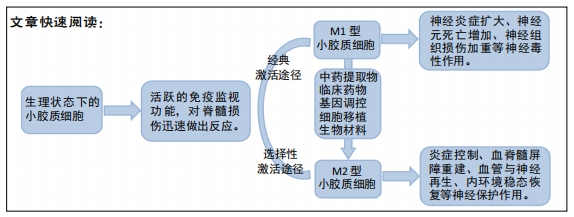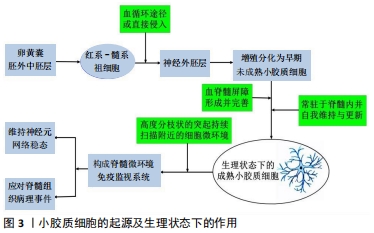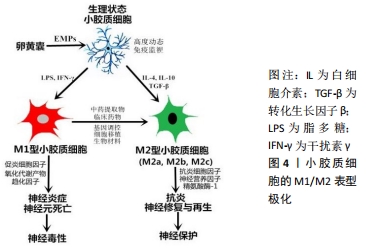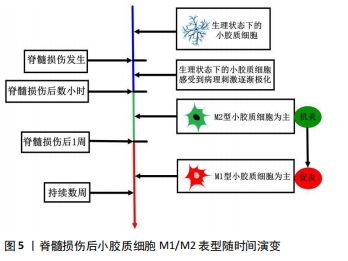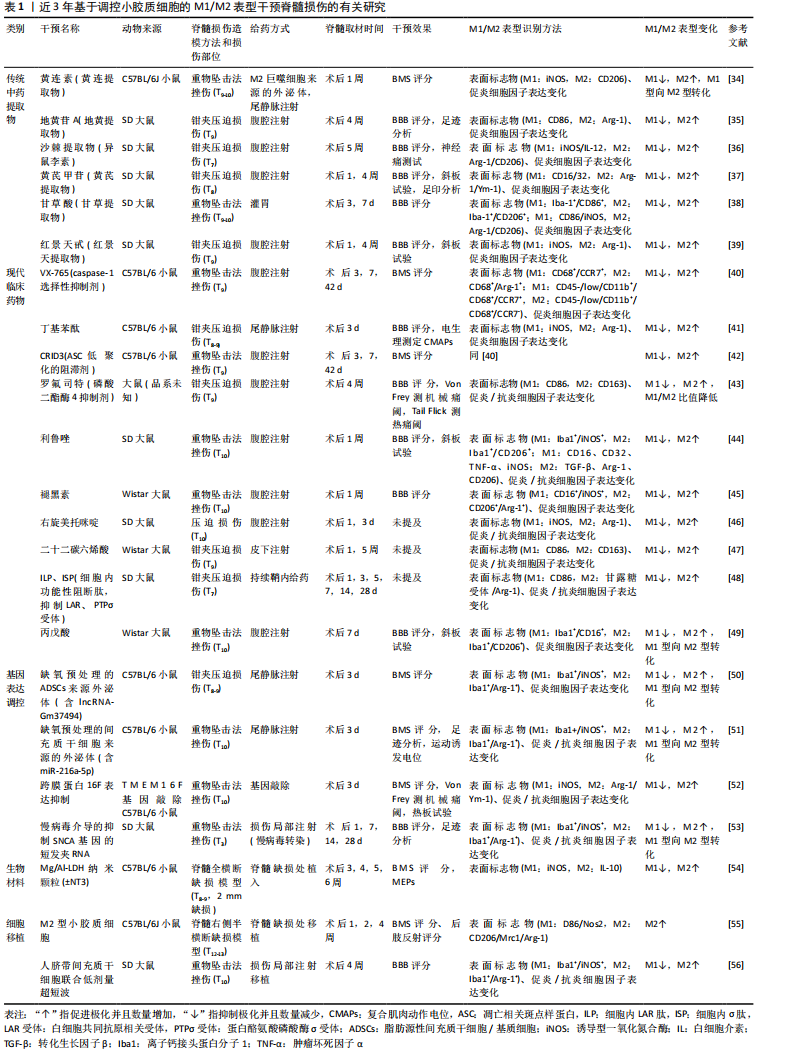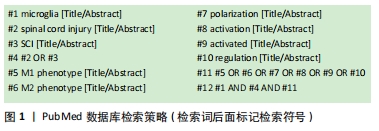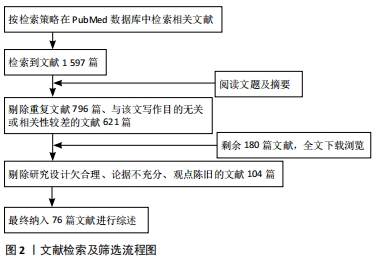[1] THION MS, GINHOUX F, GAREL S. Microglia and early brain development: An intimate journey. Science. 2018;362(6411):185-189.
[2] RAIVICH G. Like cops on the beat: the active role of resting microglia. Trends Neurosci. 2005;28(11):571-573.
[3] AKIYOSHI R, WAKE H, KATO D, et al. Microglia Enhance Synapse Activity to Promote Local Network Synchronization. eNeuro. 2018;5(5): ENEURO.0088-18.2018.
[4] UMPIERRE AD, WU LJ. How microglia sense and regulate neuronal activity. Glia. 2021;69(7):1637-1653.
[5] SIERRA A, DE CASTRO F, DEL RJ, et al. The “Big-Bang” for modern glial biology: Translation and comments on Pio del Rio-Hortega 1919 series of papers on microglia. Glia. 2016;64(11):1801-1840.
[6] RODRIGUEZ-GOMEZ JA, KAVANAGH E, ENGSKOG-VLACHOS P, et al. Microglia: Agents of the CNS Pro-Inflammatory Response. Cells. 2020; 9(7):1717.
[7] LUO L, SONG S, EZENWUKWA C C, et al. Ion channels and transporters in microglial function in physiology and brain diseases. Neurochem Int. 2021;142:104925.
[8] VENKATESH K, GHOSH S K, MULLICK M, et al. Spinal cord injury: pathophysiology, treatment strategies, associated challenges, and future implications. Cell Tissue Res. 2019;377(2):125-151.
[9] PETRALLA S, DE CHIRICO F, MITI A, et al. Epigenetics and Communication Mechanisms in Microglia Activation with a View on Technological Approaches. Biomolecules. 2021;11(2):306.
[10] STEIN M, KESHAV S, HARRIS N, et al. Interleukin 4 potently enhances murine macrophage mannose receptor activity: a marker of alternative immunologic macrophage activation. J Exp Med. 1992; 176(1):287-292.
[11] MILLS CD, KINCAID K, ALT JM, et al. M-1/M-2 macrophages and the Th1/Th2 paradigm. J Immunol. 2000;164(12):6166-6173.
[12] GORDON S. Alternative activation of macrophages. Nat Rev Immunol. 2003;3(1):23-35.
[13] LEE E, EO JC, LEE C, et al. Distinct Features of Brain-Resident Macrophages: Microglia and Non-Parenchymal Brain Macrophages. Mol Cells. 2021;44(5): 281-291.
[14] ZHOU X, ZHANG J, LI Y, et al. Astaxanthin inhibits microglia M1 activation against inflammatory injury triggered by lipopolysaccharide through down-regulating miR-31-5p. Life Sci. 2021;267:118943.
[15] GOMES-LEAL W. Why microglia kill neurons after neural disorders? The friendly fire hypothesis. Neural Regen Res. 2019;14(9):1499-1502.
[16] YU T, YU H, ZHANG B, et al. Promising Neuroprotective Function for M2 Microglia in Kainic Acid-Induced Neurotoxicity Via the Down-Regulation of NF-kappaB and Caspase 3 Signaling Pathways. Neuroscience. 2019; 406: 86-96.
[17] CHERRY JD, OLSCHOWKA JA, O’BANION MK. Are “resting” microglia more “m2”? Front Immunol. 2014;5:594.
[18] CHEN C, WU S, HONG Z, et al. Chronic hyperglycemia regulates microglia polarization through ERK5. Aging (Albany NY). 2019;11(2): 697-706.
[19] BELL-TEMIN H, CULVER-COCHRAN AE, CHAPUT D, et al. Novel Molecular Insights into Classical and Alternative Activation States of Microglia as Revealed by Stable Isotope Labeling by Amino Acids in Cell Culture (SILAC)-based Proteomics. Mol Cell Proteomics. 2015;14(12): 3173-3184.
[20] HU X, LEAK R K, SHI Y, et al. Microglial and macrophage polarization-new prospects for brain repair. Nat Rev Neurol. 2015;11(1):56-64.
[21] BELLVER-LANDETE V, BRETHEAU F, MAILHOT B, et al. Microglia are an essential component of the neuroprotective scar that forms after spinal cord injury. Nat Commun. 2019;10(1):518.
[22] DEVANNEY NA, STEWART AN, GENSEL JC. Microglia and macrophage metabolism in CNS injury and disease: The role of immunometabolism in neurodegeneration and neurotrauma. Exp Neurol. 2020;329:113310.
[23] CHERRY JD, OLSCHOWKA JA, O’BANION MK. Neuroinflammation and M2 microglia: the good, the bad, and the inflamed. J Neuroinflammation. 2014;11:98.
[24] JUKNAT A, GAO F, COPPOLA G, et al. miRNA expression profiles and molecular networks in resting and LPS-activated BV-2 microglia-Effect of cannabinoids. PLoS One. 2019;14(2):e212039.
[25] BISHT K, SHARMA K P, LECOURS C, et al. Dark microglia: A new phenotype predominantly associated with pathological states. Glia. 2016;64(5): 826-839.
[26] HAMMOND TR, DUFORT C, DISSING-OLESEN L, et al. Single-Cell RNA Sequencing of Microglia throughout the Mouse Lifespan and in the Injured Brain Reveals Complex Cell-State Changes. Immunity. 2019; 50(1):253-271.
[27] RANSOHOFF RM. A polarizing question: do M1 and M2 microglia exist? Nat Neurosci. 2016;19(8):987-991.
[28] MORGANTI JM, RIPARIP LK, ROSI S. Call Off the Dog(ma): M1/M2 Polarization Is Concurrent following Traumatic Brain Injury. PLoS One. 2016;11(1): e148001.
[29] JURGA AM, PALECZNA M, KUTER KZ. Overview of General and Discriminating Markers of Differential Microglia Phenotypes. Front Cell Neurosci. 2020;14:198.
[30] HANISCH UK, KETTENMANN H. Microglia: active sensor and versatile effector cells in the normal and pathologic brain. Nat Neurosci. 2007; 10(11):1387-1394.
[31] HOWE ML, BARRES BA. A novel role for microglia in minimizing excitotoxicity. BMC Biol. 2012;10:7.
[32] PRINZ M, JUNG S, PRILLER J. Microglia Biology: One Century of Evolving Concepts. Cell. 2019;179(2):292-311.
[33] BANATI RB, GEHRMANN J, SCHUBERT P, et al. Cytotoxicity of microglia. Glia. 1993;7(1):111-118.
[34] GAO ZS, ZHANG CJ, XIA N, et al. Berberine-loaded M2 macrophage-derived exosomes for spinal cord injury therapy. Acta Biomater. 2021; 126:211-223.
[35] XIAO S, WANG C, YANG Q, et al. Rea regulates microglial polarization and attenuates neuronal apoptosis via inhibition of the NF-kappaB and MAPK signalings for spinal cord injury repair. J Cell Mol Med. 2021;25(3):1371-1382.
[36] CHEN F, HU M, SHEN Y, et al. Isorhamnetin promotes functional recovery in rats with spinal cord injury by abating oxidative stress and modulating M2 macrophages/microglia polarization. Eur J Pharmacol. 2021;895:173878.
[37] LIN J, PAN X, HUANG C, et al. Dual regulation of microglia and neurons by Astragaloside IV-mediated mTORC1 suppression promotes functional recovery after acute spinal cord injury. J Cell Mol Med. 2020;24(1): 671-685.
[38] SU XQ, WANG XY, GONG FT, et al. Oral treatment with glycyrrhizin inhibits NLRP3 inflammasome activation and promotes microglial M2 polarization after traumatic spinal cord injury. Brain Res Bull. 2020;158:1-8.
[39] WANG C, WANG Q, LOU Y, et al. Salidroside attenuates neuroinflammation and improves functional recovery after spinal cord injury through microglia polarization regulation. J Cell Mol Med. 2018;22(2):1148-1166.
[40] CHEN J, CHEN YQ, SHI YJ, et al. VX-765 reduces neuroinflammation after spinal cord injury in mice. Neural Regen Res. 2021;16(9):1836-1847.
[41] WANG L, WU J P, HE X J. Butylphthalide has an Anti-Inflammatory Role in Spinal Cord Injury by Promoting Macrophage/Microglia M2 Polarization via p38 Phosphorylation. Spine (Phila Pa 1976). 2020; 45(17):E1066-E1076.
[42] CHEN YQ, WANG SN, SHI YJ, et al. CRID3, a blocker of apoptosis associated speck like protein containing a card, ameliorates murine spinal cord injury by improving local immune microenvironment. J Neuroinflammation. 2020; 17(1):255.
[43] MORADI K, GOLBAKHSH M, HAGHIGHI F, et al. Inhibition of phosphodiesterase IV enzyme improves locomotor and sensory complications of spinal cord injury via altering microglial activity: Introduction of Roflumilast as an alternative therapy. Int Immunopharmacol. 2020;86:106743.
[44] WU Q, ZHANG Y, ZHANG Y, et al. Riluzole improves functional recovery after acute spinal cord injury in rats and may be associated with changes in spinal microglia/macrophages polarization. Neurosci Lett. 2020;723:134829.
[45] ZHANG Y, LIU Z, ZHANG W, et al. Melatonin improves functional recovery in female rats after acute spinal cord injury by modulating polarization of spinal microglial/macrophages. J Neurosci Res. 2019; 97(7):733-743.
[46] HE H, ZHOU Y, ZHOU Y, et al. Dexmedetomidine Mitigates Microglia-Mediated Neuroinflammation through Upregulation of Programmed Cell Death Protein 1 in a Rat Spinal Cord Injury Model. J Neurotrauma. 2018; 35(21):2591-2603.
[47] MANZHULO O, TYRTYSHNAIA A, KIPRYUSHINA Y, et al. Docosahexaenoic acid induces changes in microglia/macrophage polarization after spinal cord injury in rats. Acta Histochem. 2018;120(8):741-747.
[48] DYCK S, KATARIA H, ALIZADEH A, et al. Perturbing chondroitin sulfate proteoglycan signaling through LAR and PTPsigma receptors promotes a beneficial inflammatory response following spinal cord injury. J Neuroinflammation. 2018;15(1):90.
[49] CHEN S, YE J, CHEN X, et al. Valproic acid attenuates traumatic spinal cord injury-induced inflammation via STAT1 and NF-kappaB pathway dependent of HDAC3. J Neuroinflammation. 2018;15(1):150.
[50] SHAO M, JIN M, XU S, et al. Exosomes from Long Noncoding RNA-Gm37494-ADSCs Repair Spinal Cord Injury via Shifting Microglial M1/M2 Polarization. Inflammation. 2020;43(4):1536-1547.
[51] LIU W, RONG Y, WANG J, et al. Exosome-shuttled miR-216a-5p from hypoxic preconditioned mesenchymal stem cells repair traumatic spinal cord injury by shifting microglial M1/M2 polarization. J Neuroinflammation. 2020;17(1):47.
[52] ZHAO J, GAO QY. TMEM16F inhibition limits pain-associated behavior and improves motor function by promoting microglia M2 polarization in mice. Biochem Biophys Res Commun. 2019;517(4):603-610.
[53] ZENG H, LIU N, YANG YY, et al. Lentivirus-mediated downregulation of alpha-synuclein reduces neuroinflammation and promotes functional recovery in rats with spinal cord injury. J Neuroinflammation. 2019;16(1):283.
[54] ZHU R, ZHU X, ZHU Y, et al. Immunomodulatory Layered Double Hydroxide Nanoparticles Enable Neurogenesis by Targeting Transforming Growth Factor-beta Receptor 2. ACS Nano. 2021;15(2):2812-2830.
[55] KOBASHI S, TERASHIMA T, KATAGI M, et al. Transplantation of M2-Deviated Microglia Promotes Recovery of Motor Function after Spinal Cord Injury in Mice. Mol Ther. 2020;28(1):254-265.
[56] NA L, WANG S, LIU T, et al. Ultrashort Wave Combined with Human Umbilical Cord Mesenchymal Stem Cell (HUC-MSC) Transplantation Inhibits NLRP3 Inflammasome and Improves Spinal Cord Injury via MK2/TTP Signalling Pathway. Biomed Res Int. 2020;2020:3021750.
[57] ZHANG Y, ZHANG L, SHEN J, et al. Two-photon-excited fluorescence microscopy as a tool to investigate the efficacy of methylprednisolone in a mouse spinal cord injury model. Spine (Phila Pa 1976). 2014;39(8): E493-E499.
[58] FU H, ZHAO Y, HU D, et al. Depletion of microglia exacerbates injury and impairs function recovery after spinal cord injury in mice. Cell Death Dis. 2020;11(7):528.
[59] XIONG XY, LIU L, YANG QW. Functions and mechanisms of microglia/macrophages in neuroinflammation and neurogenesis after stroke. Prog Neurobiol. 2016;142:23-44.
[60] FUGER P, HEFENDEHL JK, VEERARAGHAVALU K, et al. Microglia turnover with aging and in an Alzheimer’s model via long-term in vivo single-cell imaging. Nat Neurosci. 2017;20(10):1371-1376.
[61] EVANS TA, BARKAUSKAS DS, MYERS JT, et al. Intravital imaging of axonal interactions with microglia and macrophages in a mouse dorsal column crush injury. J Vis Exp. 2014(93):e52228.
[62] GALATRO TF, HOLTMAN IR, LERARIO AM, et al. Transcriptomic analysis of purified human cortical microglia reveals age-associated changes. Nat Neurosci. 2017;20(8):1162-1171.
[63] GOSSELIN D, SKOLA D, COUFAL NG, et al. An environment-dependent transcriptional network specifies human microglia identity. Science. 2017;356(6344):eaal3222.
[64] ORMEL PR, VIEIRA DSR, van BODEGRAVEN EJ, et al. Microglia innately develop within cerebral organoids. Nat Commun. 2018;9(1):4167.
[65] HASSELMANN J, BLURTON-JONES M. Human iPSC-derived microglia: A growing toolset to study the brain’s innate immune cells. Glia. 2020; 68(4):721-739.
[66] DUBBELAAR ML, KRACHT L, EGGEN B, et al. The Kaleidoscope of Microglial Phenotypes. Front Immunol. 2018;9:1753.
[67] XU R, LI X, BORELAND AJ, et al. Human iPSC-derived mature microglia retain their identity and functionally integrate in the chimeric mouse brain. Nat Commun. 2020;11(1):1577.
[68] JIANG P, TURKALJ L, XU R. High-Fidelity Modeling of Human Microglia with Pluripotent Stem Cells. Cell Stem Cell. 2020;26(5):629-631.
[69] POSFAI B, CSEREP C, ORSOLITS B, et al. New Insights into Microglia-Neuron Interactions: A Neuron’s Perspective. Neuroscience. 2019; 405:103-117.
[70] GAUDET AD, FONKEN LK. Glial Cells Shape Pathology and Repair After Spinal Cord Injury. Neurotherapeutics. 2018;15(3):554-577.
[71] REYNOLDS JL, MAHATO RI. Nanomedicines for the Treatment of CNS Diseases. J Neuroimmune Pharmacol. 2017;12(1):1-5.
[72] JIN K, LUO Z, ZHANG B, et al. Biomimetic nanoparticles for inflammation targeting. Acta Pharm Sin B. 2018;8(1):23-33.
[73] ALLAVENA P, PALMIOLI A, AVIGNI R, et al. PLGA Based Nanoparticles for the Monocyte-Mediated Anti-Tumor Drug Delivery System. J Biomed Nanotechnol. 2020;16(2):212-223.
[74] SHIN WH, LEE DY, PARK KW, et al. Microglia expressing interleukin-13 undergo cell death and contribute to neuronal survival in vivo. Glia. 2004;46(2):142-152.
[75] DECZKOWSKA A, AMIT I, SCHWARTZ M. Microglial immune checkpoint mechanisms. Nat Neurosci. 2018;21(6):779-786.
[76] BORGGREWE M, KOOISTRA S M, NOELLE R J, et al. Exploring the VISTA of microglia: immune checkpoints in CNS inflammation. J Mol Med (Berl). 2020;98(10):1415-1430.
|
